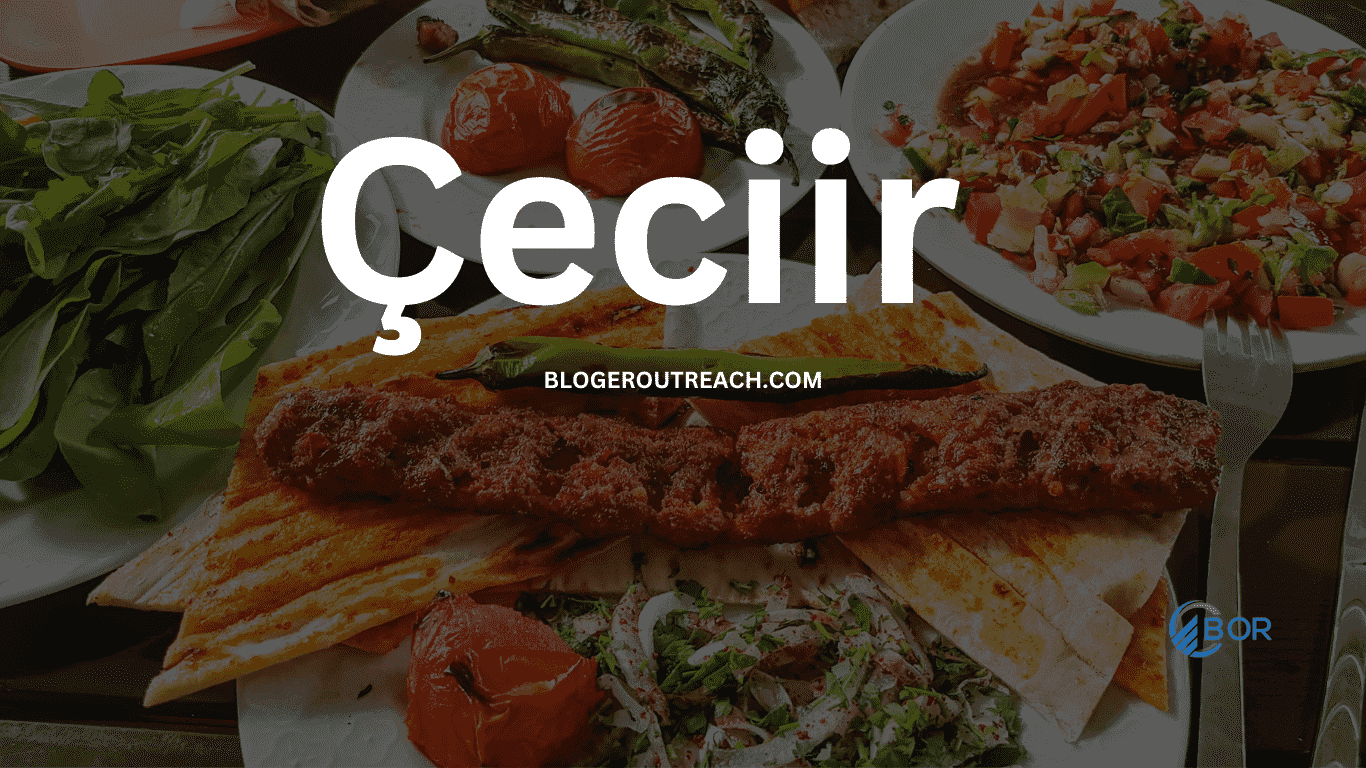Çeciir, a staple in Turkish cuisine, has a rich history that dates back centuries. The name ‘Çeciir’ originates from ‘çeci’, the local name for chickpeas, which are the primary ingredient in this dish. This humble grain, when combined with traditional Turkish spices and cooking methods, transforms into a delectable dish that is much more than just a meal – it’s a culinary experience.
Local farmers in the Anatolian region of Turkey first prepared Çeciir, finding chickpeas to be a versatile and nutritious ingredient. This is where the deep roots of Çeciir’s origins lie. Over time, this simple dish found its way into the urban kitchens of Istanbul and Ankara, becoming a beloved staple across the nation.
In Turkey, Çeciir is not just food; it’s a symbol of hospitality and communal bonding. People often serve Çecii at family gatherings and festive occasions, and you can also find it in traditional eateries known as ‘lokantas’. Each bowl of Çeciir carries with it a story of generations-old recipes, shared conversations, and a sense of home. The cultural significance of Çeciir extends beyond its flavor profile, resonating with the warm and welcoming spirit of Turkish people.
The Making of Çeciir
Ingredients and Preparation
At its core, Çeciir is a simple yet flavorful dish that primarily uses chickpeas. People often soak these overnight to soften them, which makes them easier to cook and digest. Other key ingredients include onions and garlic, both of which add depth to the flavor profile of the dish.
The spices used in Çeciir vary from region to region, but common ones include cumin, paprika, and coriander. These spices give the dish its distinctive warmth and earthiness. Some variations might also include tomatoes and bell peppers, which add a sweet and tangy dimension to the dish.
Preparing Çeciir involves a series of steps. After soaking the chickpeas overnight, you boil them until they become tender. Meanwhile, onions and garlic are sautéed in olive oil until they become fragrant and golden. You add the spices to this mixture and cook them until they release their aromas. Next, you combine the cooked chickpeas with this fragrant mixture, and simmer everything together until the flavors meld beautifully.
Traditional vs Modern Techniques
Traditionally, you would prepare Çeciir over a wood fire, lending a unique smoky flavor to the dish. Often, you would grind the chickpeas by hand using a stone mill, giving the dish its characteristic texture.
However, modern cooking techniques have brought about some changes in the preparation of Çeciir. Many cooks now use pressure cookers to soften the chickpeas, significantly reducing the cooking time. Often, people use electric grinders instead of stone mills to grind the chickpeas, which results in a smoother texture.
Despite these modern adaptations, the essence of Çeciir remains the same. It’s still a dish that requires patience and care, from the soaking of the chickpeas to the slow simmering of the ingredients. While the cooking techniques may have evolved over time, the love and dedication that goes into making Çeciir continue to be a key ingredient in this timeless dish.
The Cultural Significance of Çeciir
Çeciir in Turkish Cuisine
In the rich tapestry of Turkish cuisine, Çeciir holds a place of honor. It is more than just a dish; it’s a symbol of community and togetherness. From family dinners to neighborhood potlucks, Çeciir is often at the center of gatherings, bringing people together over shared plates and hearty conversations. It’s not uncommon to see neighbors exchanging bowls of Çecii over fences as a gesture of goodwill and friendship.
People in Turkey also consider Çeciir a national treasure. Its wholesome ingredients, rustic preparation, and comforting flavors encapsulate the spirit of Turkish cuisine – simple yet profound. Generations have passed down this dish, with each one adding their unique touch, making Çeciir a living testament to Turkey’s culinary heritage.
Çeciir in Other Cultures
While Çeciir is quintessentially Turkish, its influence extends beyond Turkey’s borders. Middle Eastern, Mediterranean, and Indian culinary traditions feature variations of Çeciir, which testifies to the universal appeal of this humble dish.
People in Middle Eastern countries often serve Çeciir with tahini and olive oil, adding a creamy richness to the dish. In Mediterranean regions, it is common to find Çecii garnished with fresh herbs like parsley and mint, lending a refreshing twist to the dish. In India, various regional cuisines use chickpeas as a staple ingredient, and you can find Çecii-like dishes prepared with local spices across the country.
These adaptations of Çeciir highlight the flexibility of this dish and its ability to transcend cultural boundaries. Whether it’s in a bustling bazaar in Istanbul, a cozy café in Beirut, or a roadside eatery in Delhi, Çecii continues to bring comfort and joy to people around the world.
It’s Nutritional Value
Health Benefits of Çeciir
Çeciir is not only a delicious meal, but it also packs in nutrients that contribute to a healthy diet. Chickpeas, the main ingredient in Çecii, are a rich source of protein, making it an excellent dish for vegetarians and vegans. They are also high in dietary fiber, which aids digestion and promotes a feeling of fullness.
The onions and garlic used in Çeciir provide essential vitamins and minerals, including vitamin C, vitamin B6, and manganese. These ingredients, known for their antioxidant properties, can help protect the body against diseases.
The spices used in Çeciir, such as cumin, paprika, and coriander, not only add flavor but also have various health benefits. For instance, people know cumin for its anti-inflammatory properties, and studies have linked coriander to improved heart health.
Çeciir as a Superfood
Considering its nutrient-rich composition, we can consider Çeciir a superfood. It’s a wholesome meal that provides essential nutrients without being high in calories or fat. This makes Çeciir an excellent choice for those seeking a balanced diet.
In addition to the health benefits already mentioned, Çeciir’s high fiber content can help regulate blood sugar levels, making it a good option for people with diabetes. The protein in chickpeas can also aid muscle growth and repair.
Moreover, studies have shown that chickpeas can help lower LDL (bad) cholesterol levels, reducing the risk of heart disease. They are also a good source of iron, which is essential for producing red blood cells and preventing anemia.
Overall, the myriad of health benefits associated with Çeciir make it a worthy addition to any diet. Whether you’re seeking a hearty meal or a nutritious snack, Çecii is a delicious and healthy choice.
The Versatility of Çeciir
While Çeciir is a dish in its own right, it also acts as a versatile ingredient that you can transform into various culinary creations. One such transformation is the creation of chickpea flour, also known as gram flour or besan. Manufacturers make this gluten-free flour by grinding dried chickpeas into a fine powder.
Cooks around the world use chickpea flour extensively in cuisines. In Italy, they make farinata or socca, a thin, pancake-like bread, from it. Meanwhile, France uses chickpea flour for panisse, a fried chickpea cake. Additionally, in India, many snacks and sweets like pakoras, bhajis, and laddoos have chickpea flour as their base.
Beyond its culinary uses, Çeciir also holds symbolic significance in some cultures. In many Middle Eastern and Mediterranean societies, people associate chickpeas with abundance and fertility due to their round shape and the large number of seeds in each pod. They often include them in wedding and new year celebrations as symbols of prosperity and good luck.
Furthermore, the act of preparing and sharing Çeciir can itself be symbolic, representing communal harmony and shared sustenance. Whether served as a traditional dish, transformed into flour for various culinary uses, or used as a symbol of abundance and community, Çeciir’s versatility truly sets it apart.
Conclusion
From its humble origins in Turkish cuisine to its global adoption, Çeciir has carved out a unique place in the culinary world. Its rich flavors and comforting warmth bring people together, making it more than just a meal—it’s a symbol of community and shared experiences.
Beyond its culinary appeal, Çeciir also holds cultural significance in various societies. Whether neighbors in Turkey exchange it or people serve it at celebrations in the Middle East, Çeciir testifies to the power of food in fostering connections and transcending cultural boundaries.
Nutritionally, Çeciir stands out for its abundance of essential nutrients. Packed with protein, fiber, and various vitamins and minerals, it contributes to a balanced diet and offers numerous health benefits. Its nutrient-rich composition qualifies As a superfood, further enhancing its appeal.
Moreover, the versatility of Çeciir enables its transformation into various forms, from chickpea flour used in diverse cuisines to its symbolic use in celebrations. This adaptability ensures that Çecii continues to inspire and delight in myriad ways.
In conclusion, the enduring appeal of Çeciir lies in its simplicity and depth. It’s a dish that nourishes the body, brings people together, and carries with it a rich tapestry of cultural significance. Whether you’re enjoying a bowl of Çeciir at a family dinner, using chickpea flour in your cooking, or partaking in a cultural celebration, Çecii serves as a delicious reminder of our shared human experience.
Stay safe, stay informed! If you want to get more information about technology you can read more articles here.

